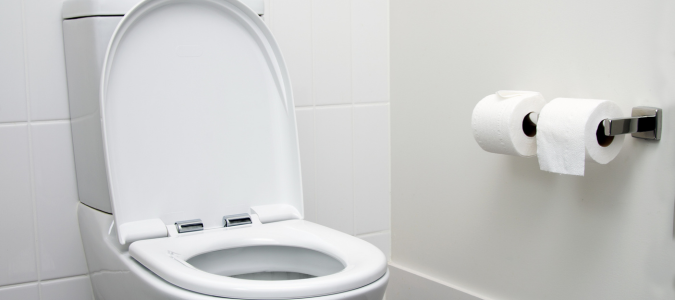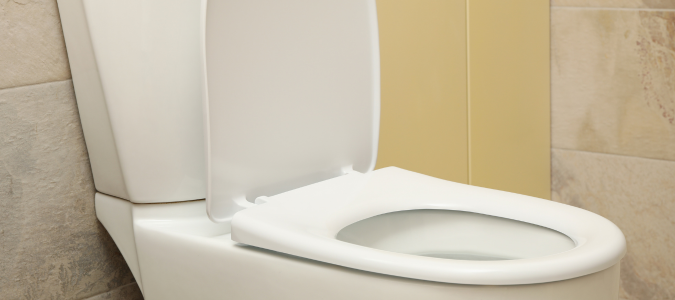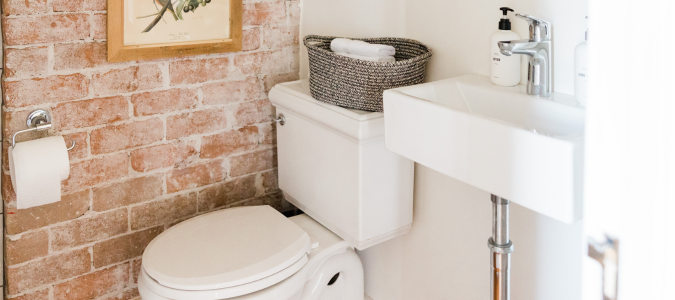Toilets serve an important role in our households. We usually take them for granted, only realizing how convenient they make our lives when they stop working. It’s troublesome if you notice your toilet that won’t flush.
If your toilet won’t flush and it’s not clogged, there’s probably something wrong with one of its components. If you can’t get it working, it’s time to seek professional help. A licensed plumber has the tools and expertise to tackle your toilet troubles.
What To Do When the Toilet Won’t Flush and It’s Not Clogged
The most common reason a toilet won’t flush is a clog. Finding wads of toilet paper or a missing toy is not unusual. But if you’ve checked and there are no obstructions, it’s time to examine your toilet’s internal parts. Something might be broken or have come loose, causing the flushing system to malfunction.
You can follow these troubleshooting steps to find the cause.
Broken or Detached Lever
If your toilet has a lever system, it may have detached from the flapper. There’s usually a chain connecting the lever to the flapper, which could have become unhooked. That could explain why nothing happens when you press the lever. You can check by removing the toilet tank’s lid and peeking inside.
Reattach the chain to the flapper if it’s unhooked and see if that fixes the issue. It’s also possible that the chain is too long and can’t lift the flapper from its seat when you try to flush. You can remedy this issue by having a professional remove a few links from the chain. But if the chain is completely broken or damaged, it needs to be replaced with a new one to get your toilet to flush again.
No Water Supply
Your toilet can’t flush without water, so check that the inlet valve is open. You or someone else in your home might have accidentally nudged it shut. If that’s the case, water can’t flow into the tank. Open it if it’s closed, and try flushing the toilet once the tank’s full.
If you’ve opened the inlet valve but the tank still won’t fill, turn on one of your faucets to see if there’s water coming into your home. The main valve might be closed if someone’s working on the plumbing system. It’s also possible that the whole neighborhood’s water supply is off to make way for emergency repairs. You can confirm with your local water provider.
Damaged Flapper
If your toilet is weak or won’t flush entirely, you might have a damaged toilet flapper that isn’t sealing. The flapper should form a tight seal between the tank and the bowl. If it’s cracked, warped or damaged, the water will trickle into the bowl, and the toilet can’t perform a powerful flush.
You can solve this problem by replacing the old flapper. Once you’ve installed a new one, check that the tank is filling instead of emptying into the bowl. Try pressing the lever to see if the flushing system is working again.
Obstructed or Malfunctioning Float
The float is a device that rises and falls with the water inside the tank. Once the water reaches the correct level, the float will prompt the fill valve to close. That prevents the tank from overflowing. But if the float is damaged or something is blocking it, the tank won’t fill with enough water, and you won’t be able to flush properly.
You can troubleshoot this by correcting the float’s level or removing obstructions. That will allow the water in the tank to rise without issues. If the float looks like it has seen better days, it might be time to replace it. That can help improve your toilet’s flushing power.
Blocked Rim Jet
The water inside the tank pumps out through the rim jets and into the bowl whenever you flush. But if there’s dirt or mineral buildup all over these holes, it won’t happen.
Fortunately, an old toothbrush and some vinegar are all you need to remedy this situation. Brush the rim jets with vinegar to help break down and dislodge the dirt. Next, press the lever to see if that fixes the flushing problem.
Contact a professional plumber if your toilet still has a weak or non-existent flush after these troubleshooting methods. The plumber will assess the situation, identify the root cause and perform the necessary repairs or replacements. Your toilet will soon have its flushing power back.
What To Do When There Is a Low Water Level in the Toilet Bowl
We all hate it when we flush the toilet, but the bowl doesn’t fill with water. That means having to get the bucket out and flush the toilet manually. Here are some fixes you can try when you’re struggling with a low water level in your toilet bowl.
Fix the Fill Tube
A broken fill tube is the most common reason there’s little water in your toilet bowl. This component controls how much water enters the tank. If it’s damaged or positioned incorrectly, the water turns off before there’s enough water in the tank, resulting in a low water level in the tank and bowl resulting in a low water level in either or both.
Inspect the fill tube and see if it’s looking worse for wear. It might be time to replace it if it’s warped or cracked. It’s best to have a professional plumber do this.
Unclog the Toilet Bowl
The classic toilet clog is a possible reason for a low water level in the bowl. The usual effect of a clog is that the water overflows, causing a disastrous mess in your bathroom. But in other cases, it causes the opposite effect. The water siphons out of the bowl, making it impossible to flush.
You can remove the blockage manually. But if unclogging your toilet isn’t your ideal weekend activity, you can leave the task to a professional plumber.
Unclog Vent Pipes
The plumbing vents allow sewer gases to escape your home and fresh oxygen to enter. If they’re blocked, the plumbing pipes will find other sources of air, siphoning the water from the toilet bowl. You’ll hear loud, gurgling noises if this happens.
Unclogging the plumbing vents is a job for the pros. Contact a professional plumber so they can remove any plants, animals or debris that hamper the airflow. They can also install a vent cover to prevent future blockages.
How To Adjust the Toilet Float
The toilet float is a simple device, but it plays a crucial role in your toilet’s mechanism. When you flush, the float lowers with the water level, opening the fill valve. The tank will then fill with water, and the float will rise with the water level. Once the float reaches a certain height, it will trigger the fill valve to close, preventing the tank from overflowing.
The toilet float must be in the correct position. Otherwise, you’ll run into all sorts of toilet issues. Adjusting a toilet float can be tricky, so leave this task to a professional plumber.
There are two types of toilet floats: a ball and arm float and a float cup. Here’s how to adjust them.
Adjusting Ball and Arm Floats
The ball connects to the fill valve via a long metal rod called the arm. There’s an adjustment screw where the arm and fill valve meet, and the plumber will turn it to change the float’s level. The float should sit an inch or two below the overflow tube.
Adjusting Float Cups
The float cup is a cylindrical component in the fill valve assembly. The float cup connects to an adjustment stem via a screw. The plumber will turn that screw to adjust the float cup’s position and fix the water level in the tank.
Adjusting the toilet float can confuse homeowners because different toilets have different configurations. Fortunately, professional plumbers know where all the parts are and can adjust your toilet float without any problem. They can get your toilet running smoothly again.
Let a Professional Deal With Your Toilet Troubles
Not all homeowners have the DIY skills to fix toilet troubles. Instead of stressing yourself out, let professional plumbers come to the rescue. They will get to the bottom of the problem, whether it’s a broken flapper or a malfunctioning fill valve. They will perform the necessary repairs and replacements, so your toilet works again.
ABC Can Help With Your Toilet Problems
When dealing with plumbing problems, it’s not worth making a mess yourself. Instead of trying to learn the ins and outs of plumbing, contact ABC Home & Commercial Services. Our licensed professionals can efficiently diagnose and repair any plumbing issue you may have. In cases where a repair isn’t in your best interest, we can help you decide which type of toilet works best for you and then install it.



